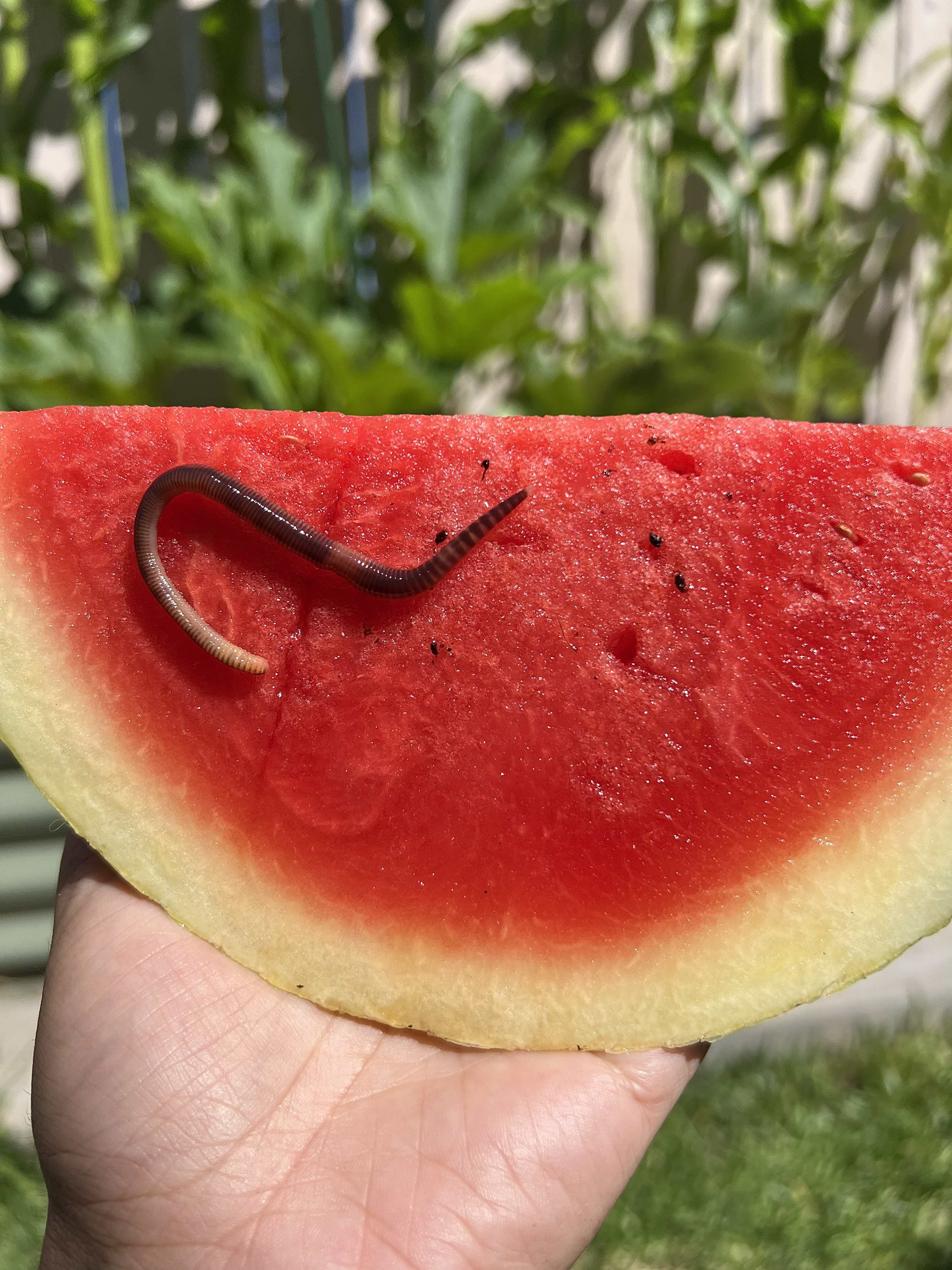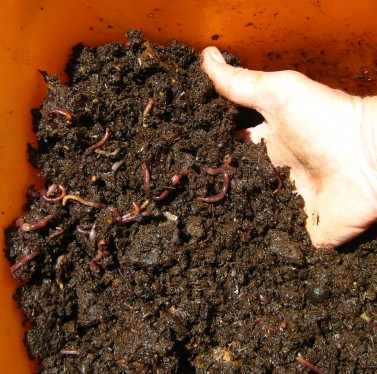Ingenious Techniques in Red Wiggler Composting to Improve Your Fertilizer
Ingenious Techniques in Red Wiggler Composting to Improve Your Fertilizer
Blog Article
Using the Power of Red Wiggler Composting: An Extensive Consider the Environmental and Agricultural Perks of This All-natural Waste Decrease Technique
The technique of red wiggler composting stands for an engaging intersection of environmental stewardship and farming advancement, offering a sustainable solution to the growing difficulties of waste monitoring and soil degradation. Through the natural procedure of vermicomposting, organic waste is transformed into a valuable resource that not just enriches dirt however additionally adds to a substantial reduction in landfill contributions and greenhouse gas emissions. As we check out the multifaceted advantages of this approach, we reveal exactly how it can improve agricultural methods and advertise eco-friendly recognition, prompting a more detailed evaluation of its possible influence on our ecosystems and neighborhoods.
What Are Red Wiggler Worms?
Red wiggler worms, clinically known as Eisenia fetida, are a types of earthworm especially adapted for composting and natural waste failure. These worms grow in the nutrient-rich environment of decaying organic matter, making them ideal for vermicomposting systems. Growing to a size of around 3 to four inches, red wigglers are identified by their reddish-brown pigmentation and distinct banding patterns along their bodies.
Unlike other earthworm varieties, red wigglers prefer to populate the upper layers of soil and organic particles, where oxygen degrees are higher and food resources are plentiful. Their physical adaptations allow them to process natural materials successfully; they have a strong digestive system that allows them to transform waste right into nutrient-rich spreadings, commonly referred to as "black gold" in horticulture and agricultural contexts.
Eisenia fetida plays a critical duty in the ecosystem by helping with the disintegration procedure, improving soil structure, and promoting microbial activity. Given their special attributes and ecological relevance, red wiggler worms have actually become a main part in sustainable waste management practices and organic horticulture initiatives, adding substantially to ecological health and wellness.
Advantages for Soil Wellness
The inclusion of red wiggler worms in composting systems offers considerable advantages for soil health and wellness. These worms play a vital function in the decay procedure, breaking down organic matter into nutrient-rich vermicompost. This all-natural plant food improves soil water, framework, and aeration retention, adding to a more favorable atmosphere for plant growth.
Vermicompost is rich in necessary nutrients such as phosphorus, nitrogen, and potassium, which are crucial for plant development (Red Wiggler Composting). The visibility of valuable microorganisms in vermicompost additionally promotes dirt health by enhancing nutrient availability and reducing soil-borne microorganisms. This dynamic communication promotes a robust soil ecological community that sustains sustainable farming techniques
Furthermore, red wigglers facilitate the formation of humus, a secure natural matter that enhances soil fertility and strength. This boosted organic material not only boosts dirt texture yet additionally boosts its ability to sequester carbon, alleviating environment change influences.
Including red wiggler composting right into agricultural systems can, consequently, cause healthier dirts, greater plant returns, and enhanced sustainability. As an outcome, embracing this natural waste decrease method can produce extensive benefits for both the environment and agricultural productivity.
Effect On Waste Reduction
Including red wiggler worms into composting systems significantly reduces waste, transforming natural products that would certainly otherwise add to land fills into valuable garden compost. This method, known as vermicomposting, effectively processes kitchen scraps, lawn waste, and various other eco-friendly materials, bring about a considerable decline in the quantity of waste sent to land fills. According to the Environmental Defense Agency, organic waste makes up a substantial part of garbage dump contents, creating unsafe greenhouse gases as it decomposes anaerobically.
By utilizing red wigglers, a highly efficient composting representative, services and houses can divert a considerable quantity of organic waste from these land fills. Each pound of red wigglers can process and eat concerning half a pound of organic waste daily, leading to a remarkable decrease in general waste generation.
In addition, the application of vermicomposting assistances local waste administration efforts and promotes a round economy, wherein waste is transformed right into a resource. As neighborhoods progressively embrace this technique, the advancing impact on waste decrease ends up being apparent, fostering a much more sustainable setting and encouraging accountable waste monitoring practices. Embracing red wiggler composting not only reduces waste concerns but additionally boosts neighborhood understanding about lasting living.
Enhancing Agricultural Practices
Using red wiggler worms in farming methods can dramatically improve dirt wellness and crop performance. These published here worms play an important role in the composting process, breaking down natural matter right into nutrient-rich vermicompost. This all-natural plant food enhances dirt framework, oygenation, and water retention, which are crucial for robust plant development.
Furthermore, the castings produced by red wigglers are abundant in necessary nutrients, such as potassium, phosphorus, and nitrogen, promoting healthier crops with higher returns. The microbial activity boosted by these worms additionally adds to a flourishing soil ecosystem, raising biodiversity and durability versus parasites and conditions.

In addition, the usage of vermicompost can enhance dirt pH levels, making nutrients a lot more easily accessible to plants. Red Wiggler Composting. Because of this, farmers can grow much healthier crops while at the same time adding to dirt preservation efforts, inevitably producing an extra lasting farming future
Beginning With Composting
Starting your composting journey calls for an understanding of the important elements and processes involved. The main component in red wiggler composting is organic waste, which can include cooking area scraps, backyard waste, and paper items. It is vital to keep an equilibrium between environment-friendly materials, abundant in nitrogen, and brown materials, high in carbon. This balance fosters an ideal setting for red wigglers, which are the vital organisms in this composting method.
Choosing a suitable composting system is just as important. Worm containers can be made for indoor or outdoor use, and they must give appropriate drain and oygenation. It is encouraged to begin with a small number of worms-- roughly one pound of red wigglers for each one extra pound of waste generated regular.

Final Thought

The method of red wiggler composting represents an engaging junction of ecological stewardship and farming development, providing a sustainable option to the growing difficulties of waste administration and soil deterioration.Furthermore, the application of vermicomposting supports regional waste administration efforts and promotes a round economic climate, where waste is transformed right into a source. As neighborhoods progressively adopt this technique, the advancing impact on waste decrease becomes apparent, fostering an extra lasting atmosphere and motivating responsible waste management methods. The key active ingredient in red wiggler composting is natural waste, which can include kitchen scraps, yard waste, and paper items.In recap, red wiggler composting offers a lasting remedy for organic waste monitoring, generating nutrient-rich vermicompost that considerably boosts dirt health.
Report this page